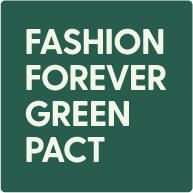
WHY MMCFs
Man-made cellulosic fibres (MMCF), like viscose and lyocell, are a promising alternative to synthetics.
Made from dissolved wood pulp, the regenerated fibres are renewable, biodegradable and have the potential to be climate-friendly, if sourced responsibly.
Forest Friendly
Viscose comes in various forms, with Lyocell being the most environmentally friendly type. This method uses a non-toxic chemical to dissolve the wood pulp and reuses the chemical component endlessly in a closed loop manufacturing process. Its primary natural resource – trees – is what gives viscose its reputation for being renewable.
MMCF are not only a great alternative to fossil fuel-based synthetics but are also loved and appreciated by customers for their softness, breathability, and beautiful colour retention.
Viscose
Viscose represent 80% percent of MMCF.
Also called artificial silk
Viscose Staple Fibre
Viscose Filament Fibre
Type:
Various: firs, pines, poplars, eucalyptus, birch, beech
Species:
Modal
It is a type of viscose that is produced in order to obtain a less degraded cellulose staple, with better mechanical and chemical characteristics to reproduce as much as possible the characteristics of cotton.
Type:
Viscose Staple Fibre
Species:
Beeches
Lyocell
same process as viscose but is dissolved in an organic solvent (amine oxide) instead of carbon disulfide.
Viscose Staple Fibre
Type:
Mostly eucalyptus
Species:
Cellulosic Acetate
Acetate differs from rayon (or viscose) in the employment of acetic acid in production.
Type:
Viscose Filament Fibre
Viscose Staple Fibre
Species:
Various: firs, pines, poplars, eucalyptus, birch, beeches
Cupro
Not From Wood
MMCFs do not originate from forests because it comes from the cotton linter.
Only one fiber producer: Asahi Kasei
Bamboo
Bamboo fibers are also used to make textiles.
From the bamboo you can obtain:
Viscose
Modal
Lyocell
40%+
Unfortunately, with over 40% of wood fibers used for viscose production are sourced from uncertified forests. This threatens all forests, including valuable ancient and endangered forests, leaving them vulnerable to deforestation and illegal logging.
Fibers from uncertified sources
FSC-certified
FSC certified forest management ensures that there is no net loss of forest over time, even though trees are harvested. It also protects biodiversity and the rights of Indigenous People, all while providing a safe and equal environment for workers.
MMCFs mitigate the risks.
A lot of work is being put into improving how MMCF fibres are produced and where they are sourced. Renewable and recycled fibres are coming to the forefront of material production, and this puts the textile industry on the path toward a more sustainable future.
Renewable and NextGen fibers on the raise









